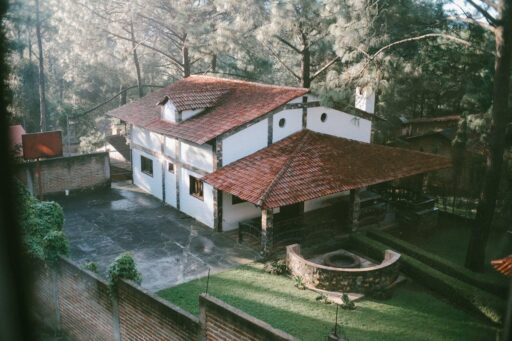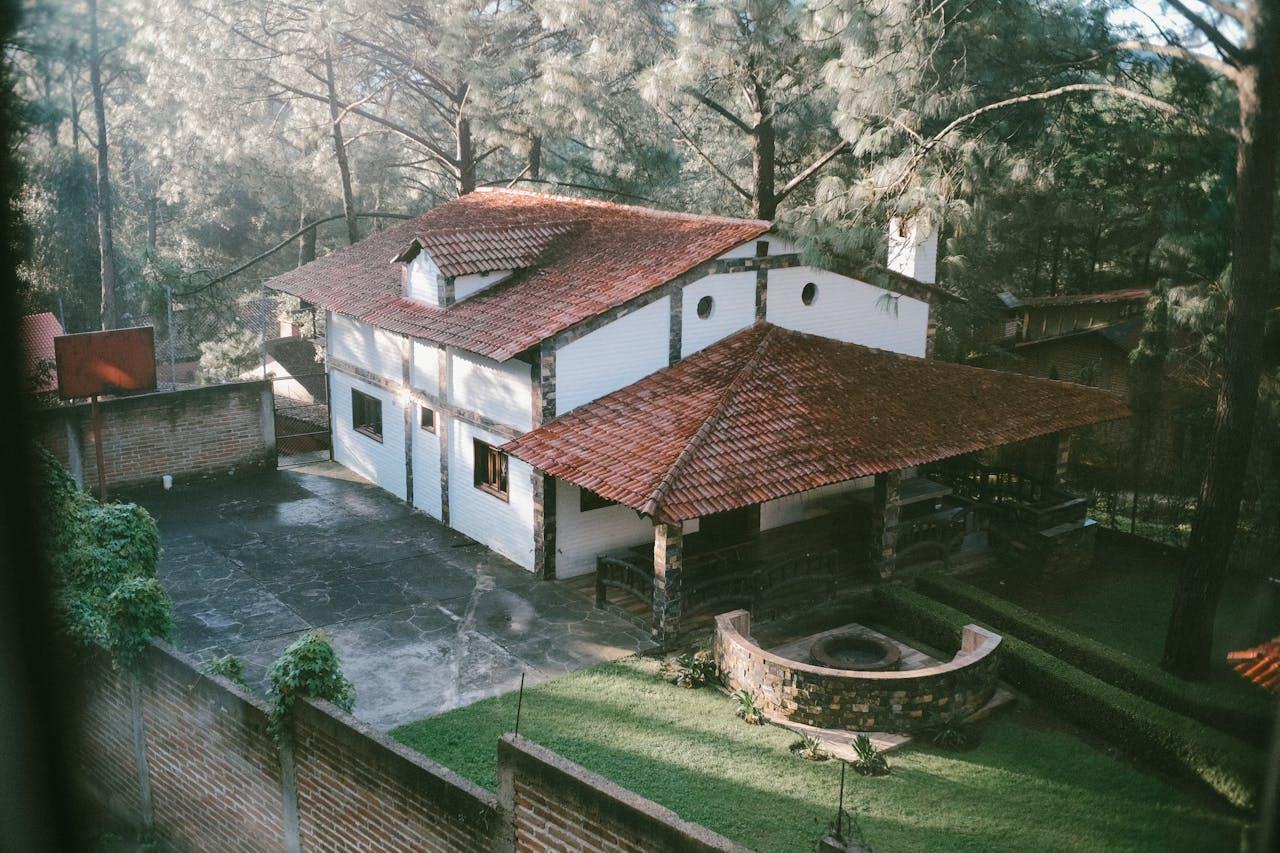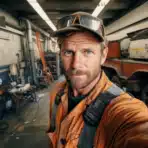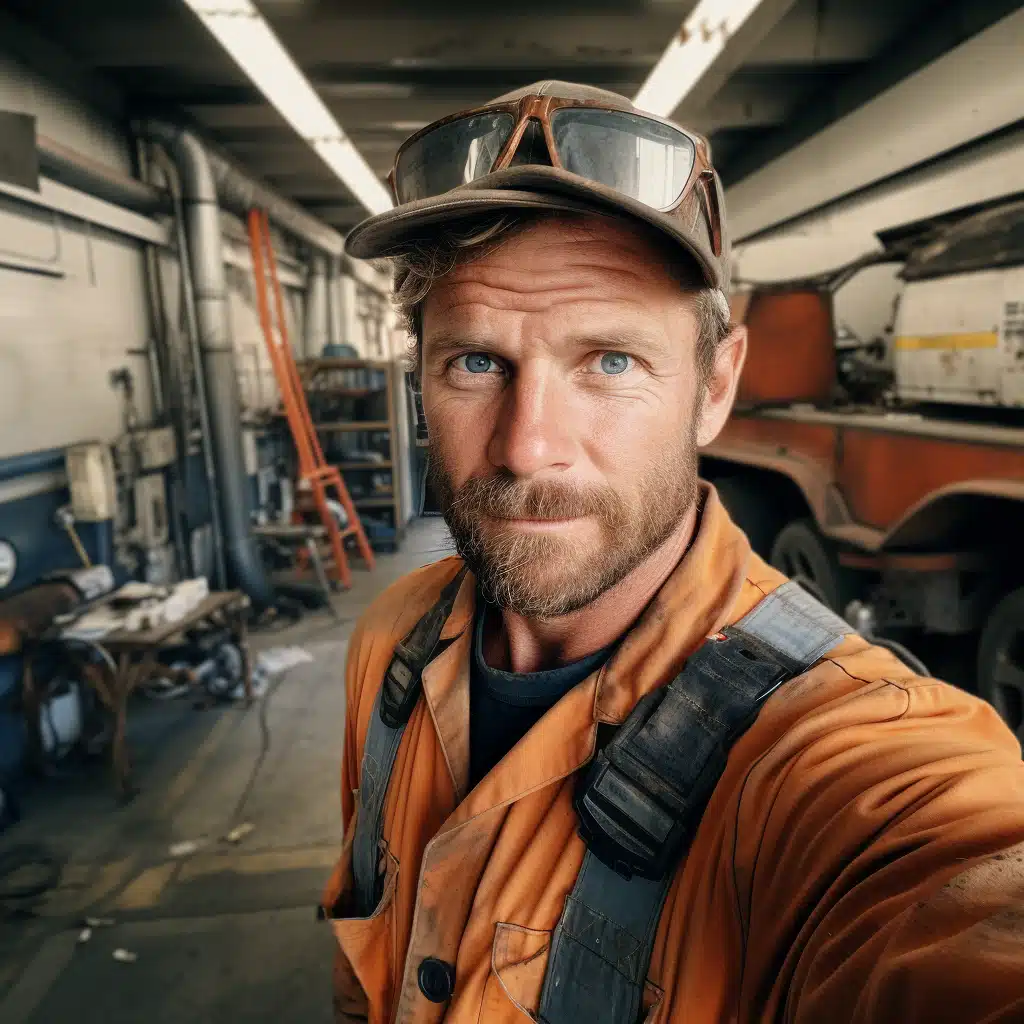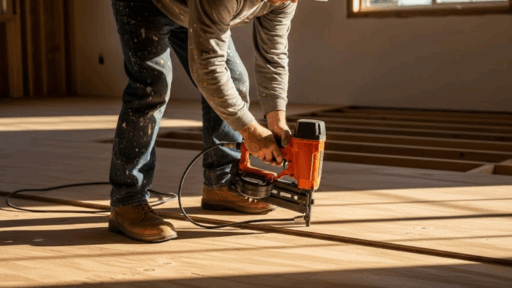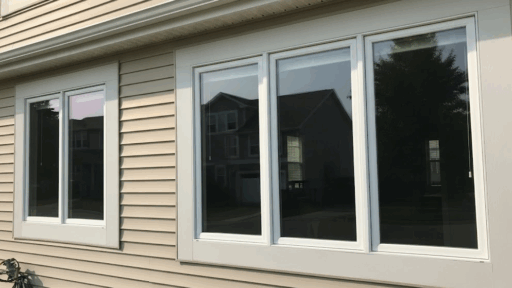Roof stains can sneak up on you. One day your shingles look just fine, and the next, you’re spotting black streaks, green patches, or rusty blotches. While some stains are just cosmetic, others are a red flag that your roof needs attention. In this guide, we’ll break down what these stains mean, what causes them, and when it’s time to act.
Black Streaks Aren’t Just Dirt
Those black streaks you see on roofs? They’re not just dust or grime. They’re often caused by a type of algae called Gloeocapsa magma. This algae thrives in humid environments and feeds on the limestone in your shingles. Over time, it spreads and creates dark, unsightly lines that run down your roof.
While black algae doesn’t necessarily damage your roof right away, it does absorb heat, which can wear down shingles faster and affect your home’s energy efficiency. If your roof is heavily streaked, it’s more than just a cosmetic issue. It may be hurting your roof’s performance.
Cleaning solutions designed for roofs can remove the stains, but it’s important not to pressure wash, which can damage the shingles. A professional roof cleaning company will know how to treat the algae without harming the roof materials.
Rust-Colored Spots? Check Your Flashing
Rust-colored stains can be a sign that your metal components, like flashing, chimney caps, or vents, are corroding. Flashing helps prevent water from seeping into joints and seams, so if it’s rusting, it might be failing.
As rust spreads, it can stain the shingles below and compromise waterproofing. Catching rust early can save you from leaks or interior water damage later. Often, a simple replacement of the metal part is all you need, but if rust has spread to the surrounding shingles, repairs might be more involved.
Green Patches Signal Moss or Algae
Green stains are usually a sign of moss, mold, or green algae. Moss, in particular, loves shady, damp parts of your roof areas under tree cover. It might look quaint and rustic, but moss holds moisture against the shingles, which can cause them to lift and decay.
If left unchecked, moss can damage the protective layers of your roof. It also adds weight and can freeze in winter, making cracks more likely.
Removing moss is a delicate process; again, skip the pressure washer. Zinc or copper strips installed at the peak of your roof can help prevent moss from growing in the first place, as rainwater carries the metal ions down your roof and naturally deters plant life.
When a Stain Is a Leak
Sometimes, what looks like a stain on your roof is a visible clue of a more serious problem: a leak. Stains that appear after a storm or heavy rainfall near chimneys, skylights, or vents should never be ignored.
Check your attic or ceiling for any signs of water penetration, like brown spots, peeling paint, or mold. If you spot those, it’s a sign the stain isn’t just on the surface; water is getting in.
From inspections to full replacements, Blue Bird Roofing has your home covered. Whether it’s a mystery stain or an obvious problem, professional guidance makes all the difference when it comes to protecting your home.
Shiny, Shimmery, and Sticky? Watch for Sap and Tree Debris
If your roof sits under or near trees, some of those odd stains might not be coming from inside your roof at all. Tree sap, pollen, leaves, and even bird droppings can leave marks that change with the weather.
While these stains might not damage the roof directly, the debris can trap moisture or clog gutters, leading to indirect damage over time. Regular roof and gutter cleaning can help reduce this buildup.
Branches rubbing against shingles can also scrape away protective granules, speeding up wear. Consider trimming back trees that hang too close to the roof to prevent long-term issues.
Don’t Panic Over Every Stain
Not every stain means disaster. Roofs are exposed to sun, rain, wind, and pollution 24/7. Discoloration is part of normal wear and tear, and sometimes, it’s just a bit of environmental buildup that can be cleaned.
The key is knowing what kind of stain you’re dealing with. A dark spot here and there isn’t urgent. But widespread discoloration, moisture-related stains, or stains that return quickly after cleaning could mean deeper issues. Monitoring your roof regularly is the best way to spot potential trouble before it turns into expensive repairs.
Should You Clean or Replace?
This is a common question homeowners ask. If the stain is purely surface-level and your shingles are still in good shape, cleaning is usually enough. But if the stains come with cracked shingles, sagging areas, or repeated moss and algae growth, you may need a more serious fix.
Replacing parts of your roof or even doing a full replacement might sound extreme, but in many cases, it’s more cost-effective than dealing with constant cleaning and patching. A professional roof inspection can tell you what’s going on and help you make a smart decision.
When to Call in the Experts
If you’re unsure what a stain means, or if you’re seeing multiple types of discoloration, it’s smart to call in a roofing professional. They’ll know the difference between cosmetic and structural problems.
Experts can also identify early signs of rot, venting issues, or insulation problems just by inspecting how stains have formed. What you think is just an eyesore might be a clue to a bigger issue.
Don’t risk your safety by climbing up there yourself. Roofing professionals have the tools and training to inspect your roof safely and thoroughly.
Final Thought: Your Roof Talks, You Just Have to Listen
Stains are your roof’s way of saying something’s up. Whether it’s algae, moss, rust, or something more serious, paying attention to those marks can save you thousands down the road.
Staying ahead of roof maintenance means fewer surprises and better protection for your home. So next time you look up and see something unusual, don’t ignore it. It could be your roof asking for help.

